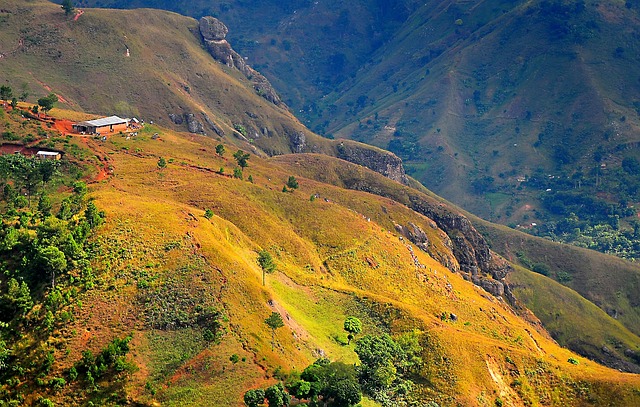Haiti is a country with a rich and diverse cultural heritage, including a deep connection to nature and the spiritual world. One of the most prominent aspects of Haitian culture is Voodoo, a religion that combines elements of African spiritual beliefs, Catholicism, and indigenous traditions. In Haitian Voodoo, there is a strong connection between nature and the spiritual realm, with rituals and beliefs that emphasize the importance of the natural world and its influence on human life.
Origins of Voodoo in Haiti
Voodoo, also spelled Vodou or Vodun, has its origins in West Africa, where it was practiced by various ethnic groups for centuries. When African slaves were brought to Haiti during the transatlantic slave trade, they brought their spiritual beliefs with them. Over time, these beliefs merged with elements of Catholicism and indigenous Caribbean traditions to form what is now known as Haitian Voodoo.
The natural world plays a central role in Haitian Voodoo beliefs, as it is seen as a source of spiritual power and connection to the divine. In Voodoo, spirits known as lwas are believed to govern different aspects of the natural world, such as the earth, the sea, and the sky. These lwas are invoked through rituals and ceremonies in order to seek their guidance and help in various aspects of life.
The Elements of Nature in Voodoo
In Voodoo, each of the elements of nature is associated with different lwas and has its own significance in spiritual practices. For example, the earth is associated with the lwa Gede, who is the guardian of the dead and the spirit world. Gede is often invoked during rituals to honor ancestors and seek their guidance. Similarly, the sea is associated with the lwa Agwe, the ruler of the ocean and protector of sailors. Agwe is honored with offerings of food and drink, as well as elaborate ceremonies performed on the shore.
The sky is associated with the lwa Loco, the spirit of storms and lightning. Loco is seen as a powerful and unpredictable force of nature, and is often invoked during rituals to bring about change and transformation. The wind is associated with the lwa Ogou, the warrior spirit who brings strength and protection to the community. Ogou is often called upon for help in times of conflict or struggle.
Overall, the elements of nature in Voodoo are seen as manifestations of divine power and energy, and are revered and respected by practitioners of the religion. By connecting with these elements through rituals and ceremonies, followers of Voodoo seek to maintain harmony and balance in the natural world, as well as in their own lives.
The Role of Nature in Voodoo Rituals
Rituals and ceremonies are an integral part of Voodoo practice, and often take place in outdoor settings such as forests, mountains, or rivers. These natural environments are seen as sacred spaces where the connection between the spiritual and physical worlds is strongest. By performing rituals in nature, practitioners of Voodoo seek to harness the spiritual power of the natural world and communicate with the lwas more effectively.
One of the most important rituals in Haitian Voodoo is the ceremony of the “Hounfo” or temple, which is a gathering of practitioners to honor and communicate with the lwas. These ceremonies often involve offerings of food, drink, and other gifts to the spirits, as well as music, dance, and drumming. The natural environment in which these ceremonies take place is believed to enhance the spiritual connection between the participants and the lwas, and to facilitate communication and healing.
Nature is also an important source of medicinal plants and herbs used in Voodoo healing practices. Many practitioners of Voodoo are also herbalists who gather plants from the forests and mountains to create remedies for various physical and spiritual ailments. These natural remedies are believed to have powerful healing properties that can restore balance and harmony to the body and spirit.
The Connection Between Nature and the Human Spirit
In Haitian Voodoo, there is a deep belief in the interconnectedness of all living beings and the natural world. Practitioners see themselves as part of a larger spiritual ecosystem, where humans, animals, plants, and spirits all coexist and influence each other. By maintaining a respectful and harmonious relationship with the natural world, practitioners of Voodoo seek to cultivate balance, prosperity, and spiritual growth in their lives.
One of the key principles of Voodoo is the belief in the “Bondye,” or the supreme creator and source of all life. Bondye is seen as a transcendent and all-powerful force that governs the universe and determines the destiny of all living beings. By connecting with the elements of nature and the lwas, practitioners of Voodoo seek to align themselves with the will of Bondye and fulfill their spiritual purpose on earth.
Overall, the connection between Voodoo and nature in Haitian beliefs is a powerful and profound one. By honoring and respecting the natural world, practitioners of Voodoo seek to maintain balance, harmony, and spiritual connection in their lives. Through rituals, ceremonies, and healing practices that involve the elements of nature, followers of Voodoo seek to cultivate a deep sense of gratitude, reverence, and awe for the world around them. In doing so, they strive to live in harmony with the earth, the spirits, and the divine forces that govern all of creation.

